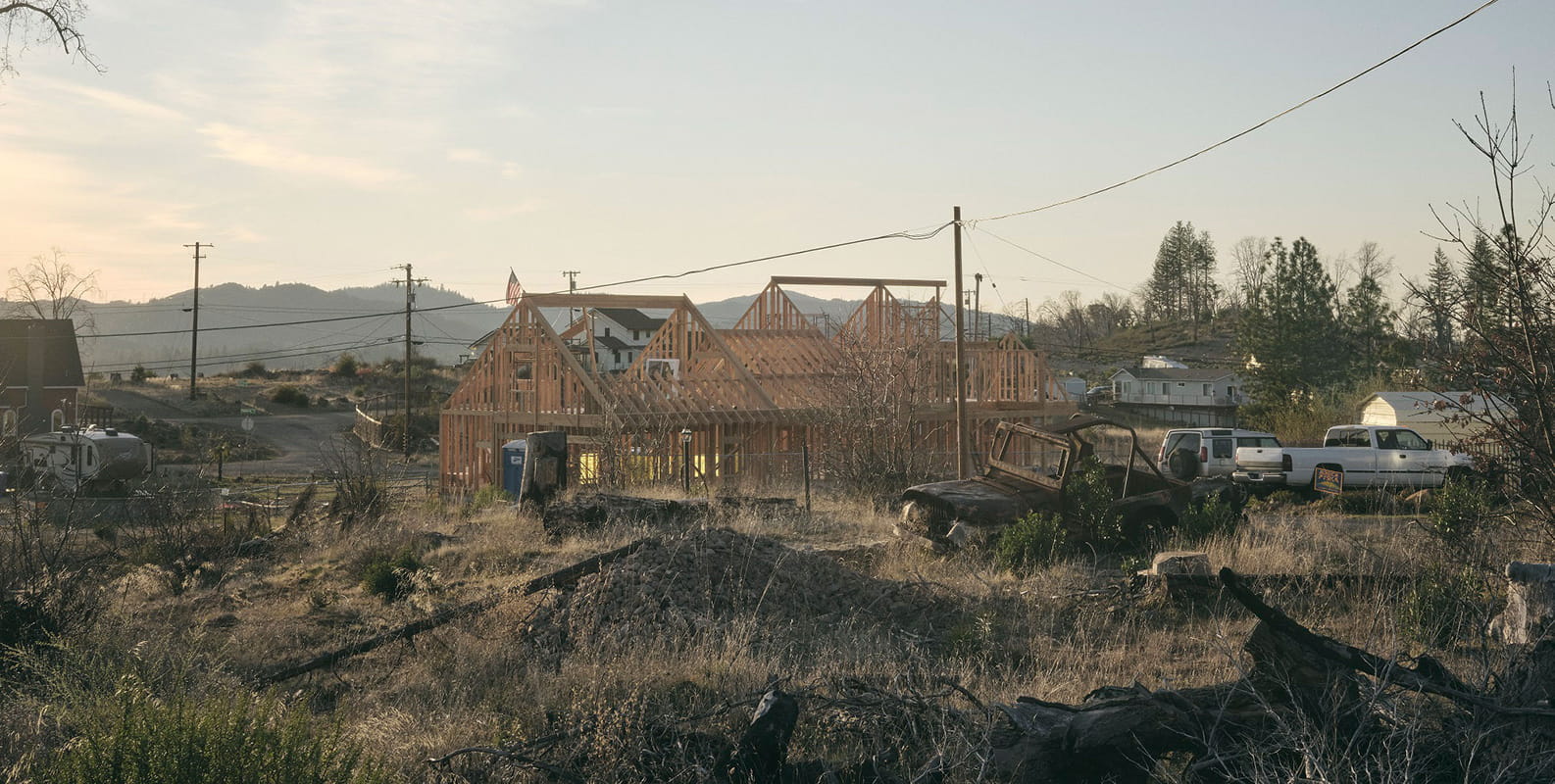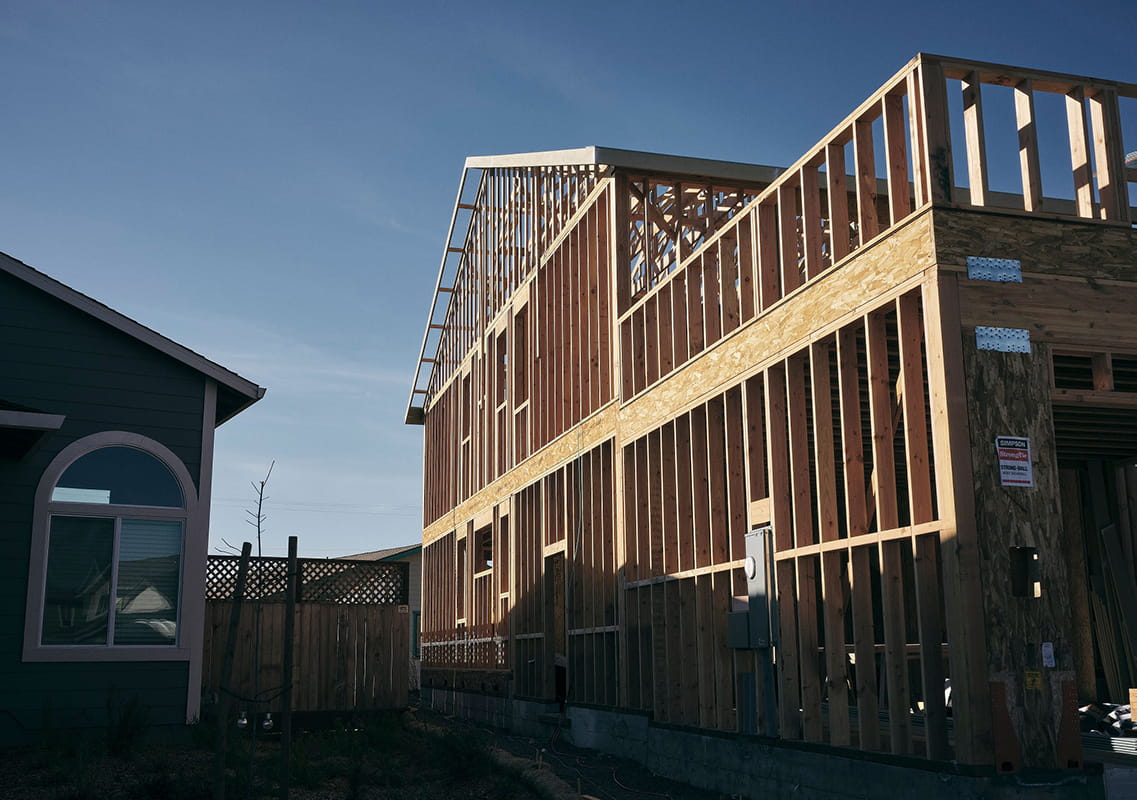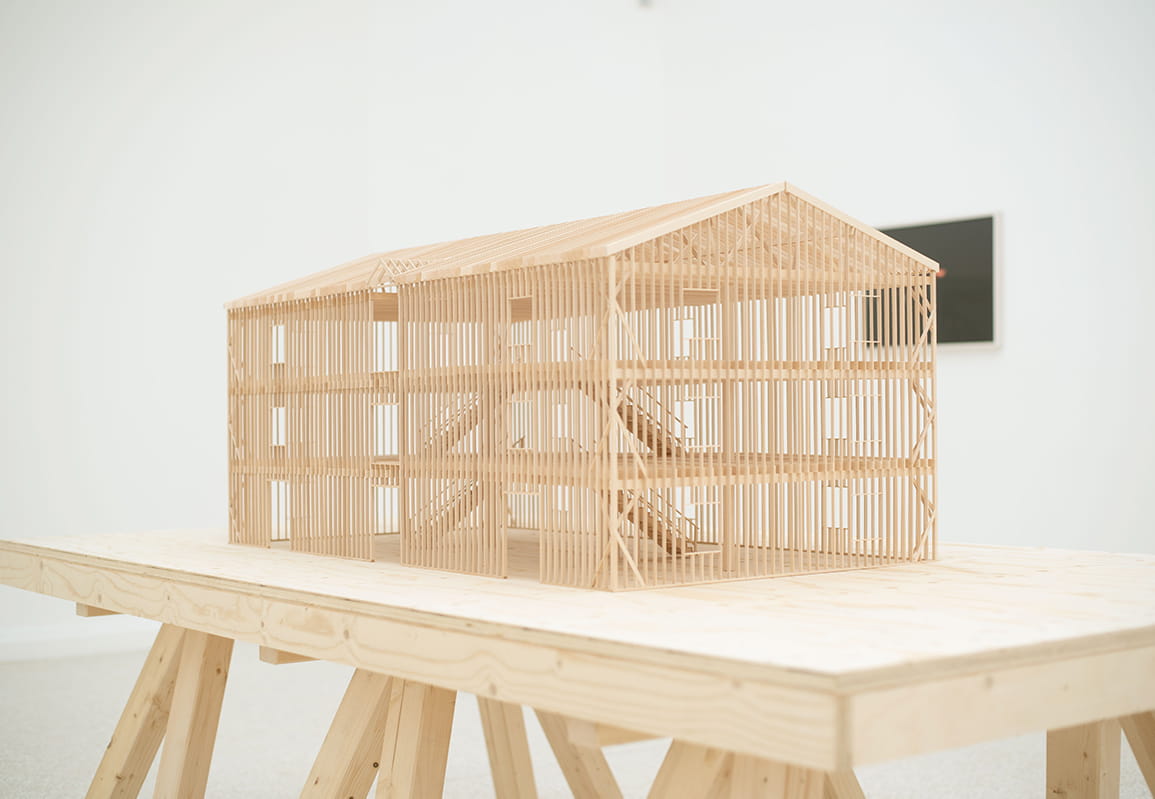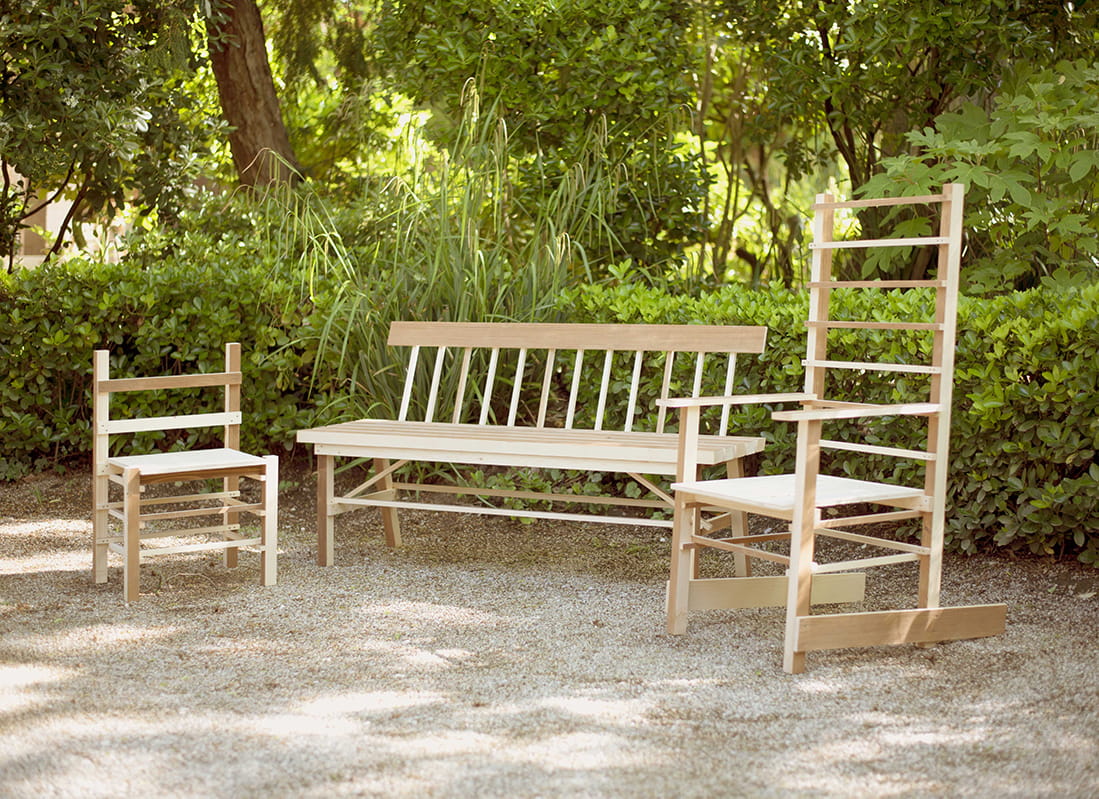
The US Pavilion at the Venice Architecture Biennale 2021 traces contribution of wood framing in America
‘American Framing’ traces the architecture of wood framing and its contribution in contemporary America, on display in the US Pavilion at the Venice Architecture Biennale 2021.
Originating in the early 19th century, the wooden construction was adopted given its simplicity and speed of construction. Its ability to be built by low or unskilled workers made wooden framing a fit for growing economy. This construction system grew in popularity given the abundance of Southern Pine and Douglas Fir Forests, paving way for churches, barns, stores and most common wooden building type, houses.




The exhibit aims to highlight the contribution of wood framing which is often neglected for more exotic trends in the architecture industry. With 90% of new homes in the US today being built on wood frame method and given its low carbon footprint, the installation seeks to inspire and inform the visitors about this construction method.
“We want to work with a particularly American theme and open up new possibilities for design. The exhibition looks back at the history of wood framing and speculates on how buildings might be different if we restrain or exaggerate the system itself,” said Paul Andersen, the US Pavilion Co-Curator. “We are incredibly honoured to represent our country at the Biennale Architettura. As practicing architects and educators, we often explore how ordinary architecture might be a platform for new ideas and discourse.”
The monumental exhibit transforms the entrance to the neoclassical US Pavilion and features a full-scale installation, comprised of a half-section of a wood-framed house. Requiring visitors to pass through the installation to enter the exhibition, the four-floor structure is fully traversable, inviting people to experience the forms and techniques of wood framing, firsthand.
“By committing the entire exhibition to wood framing—the great forgotten basis of American architecture—our presentation at this year’s Biennale elevates an often dismissed or ignored form of construction,” said Paul Preissner, the US Pavilion Co-Curator and Commissioner. “As Paul and I were both part of the 2000 US Pavilion, as students at our respective universities, we are happy to be able to share this same opportunity with current UIC students and proud to show their work to the world.”






The exhibit also features the commissioned photographs from Daniel Shea and Chris Strong, documenting the history, culture and people involved with softwood construction. The imagery documents the forest where the wood comes from and the process involved from harvesting to preparation of lumber to the building process and captures both the humans and their surrounding environment.
The exhibit also features a collection of scale model, researched and designed by the students at the University of Illinois Chicago, School of Architecture, presenting the history of wood framing. Examples of prominent structures replicated in these models include the Sears Hillsboro House, a 1950s mobile home, and refugee cottages from the San Francisco earthquakes in 1906, among others. Two sets of furniture by Ania Jaworska and Norman Kelley are installed in the courtyard and within the full-scale wood structure, both reviving historic pieces and producing them from common dimensional lumber.
American Framing examines the often-overlooked contribution to architecture by wood framing method. Through this exploration, the idea that design can be conceived out of ordinary is reignited.
ABOUT U.S. PAVILION
The United States Pavilion at the Giardini della Biennale, a building in the neoclassical style, opened on May 4, 1930. Since 1986, The U.S. Pavilion has been owned by the Solomon R. Guggenheim Foundation and managed by the Peggy Guggenheim Collection in Venice, which works closely with the Department of State and exhibition curators to install and maintain all
official U.S. exhibitions presented in the Pavilion. Every two years, museum curators from across the U.S. detail their visions for the U.S. Pavilion in proposals that are reviewed by the National Endowment for the Arts Federal Advisory Committee on International Exhibitions (FACIE), a group comprising curators, museum directors, and artists who then submit their recommendations to the U.S. Department of State's Bureau of Educational and Cultural Affairs. Past exhibitions can be viewed on the Peggy Guggenheim Collection website at https://www.guggenheim-venice.it/en/art/us-pavilion/
ABOUT THE CURATORS
Paul Andersen is the director of Independent Architecture, a Denver based office with projects that speculate on the roles that form, repetition, and pop culture play in architecture. He shapes the office’s agenda and practice, conducting design projects in professional and academic contexts. His projects have won a number of competitions and awards, including several AIA Awards and a Progressive Architecture (P/A) Award. Andersen has been a guest curator at the Museum of Contemporary Art Denver and the Biennial of the Americas, and was appointed a Fulbright Specialist in Architecture. He is the author of several books, including The Architecture of Patterns and The Monuments Power the Cars, along with articles and essays on design.
In addition to teaching at UIC, Andersen has taught at the Harvard University Graduate School of Design, Cornell University Department of Architecture, and the Universidad Torcuato Di Tella. He earned a Master of Architecture from the University of California, Los Angeles and a Bachelor of Arts from the University of Pennsylvania.
Paul Preissner is the founding principal of Paul Preissner Architects, which is located in Chicago. His work has been exhibited in the United States and abroad, including the Museum of Contemporary Art in Chicago, the Chicago Architecture Biennial, the Buenos Aires International Biennale of Architecture, and the Rotterdam Biennale, and is a part of the permanent collection of the Art Institute of Chicago. His project for Ring of Hope in Chicago
received a 2019 Progressive Architecture (P/A) Award. The first book on his work, Kind of Boring, was published by ACTAR in November 2020. He has also contributed essays about architecture to various publications, including Volume, CLOG, PLOT, and Newcity Magazine.
An Associate Professor at UIC, Preissner has also taught at Columbia University GSAPP, Syracuse University School of Architecture, the University of Pennsylvania School of Design, the University of Nebraska School of Architecture, the School of the Art Institute of Chicago, and the Southern California Institute of Architecture. He has a Master of Architecture from Columbia University and a Bachelor of Science in Architecture from the University of Illinois at Urbana-Champaign.
ABOUT THE ORGANIZING INSTITUTION:
University of Illinois Chicago: Located in the heart of one of the world’s great cities, the University of Illinois Chicago is a vital part of the educational, technological, and cultural fabric of the region. As Chicago’s only public research university with 33,000 students, 12,000 faculty and staff, and 16 academic colleges, including the nation’s largest medical school, UIC provides access to excellence and opportunity to students from a wide socio-economic population.
The University of Illinois Chicago traces its origins to several private health colleges that were founded in Chicago during the 19th century. Following World War II, the University of Illinois increased its presence in Chicago by creating a temporary, two-year branch campus on Navy Pier. The Chicago Undergraduate Division primarily accommodated student veterans on the G.I. Bill. In the 20th century, new campuses were built in Chicago and later joined together to form a comprehensive learning community. Befitting the location of the campus at a crossroads of immigration, many students were first in their families to attend college – as are many of UIC’s students today. In the last three decades, UIC has transformed itself into one of the top 65 research universities in the United States
SUBSCRIBE TO OUR NEWSLETTER



IMAGE GALLERY
SHARE ARTICLE
COMMENTS